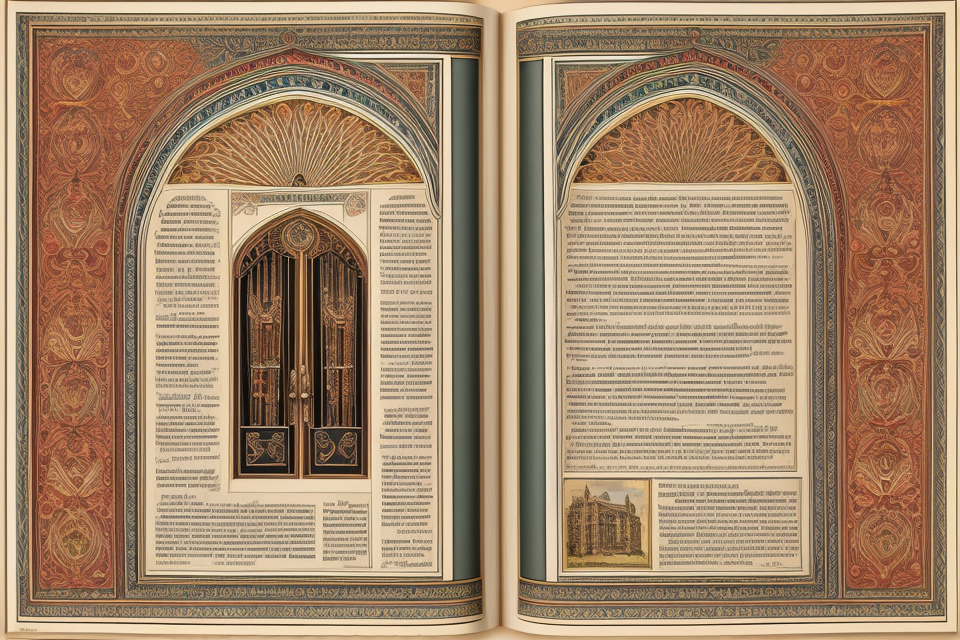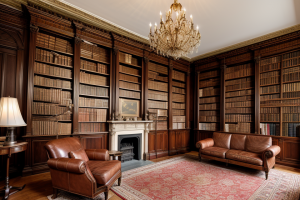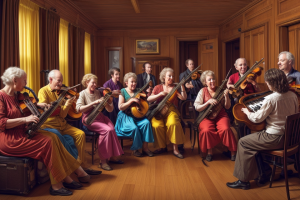
When it comes to art, literature, music, and other forms of expression, the terms “traditional” and “classic” are often used interchangeably. However, there is a distinct difference between the two that is worth exploring. In this comprehensive guide, we will delve into the nuances of traditional and classic, and understand the distinctions that set them apart. From their historical context to their cultural significance, we will examine the factors that contribute to their unique characteristics. So, join us as we embark on a journey to unravel the mysteries of traditional and classic, and discover what makes them truly special.
Defining Traditional and Classic
Traditional: A Timeless Elegance
Traditional design is characterized by its timeless elegance, which is achieved through a focus on history and heritage, authenticity and simplicity, and stability and durability.
Emphasizing History and Heritage
Traditional design often draws inspiration from historical styles and eras, incorporating classic elements such as moldings, cornices, and archways. This approach allows traditional design to celebrate the rich history and heritage of interior design while maintaining a sense of timelessness.
Authenticity and Simplicity
Authenticity and simplicity are also key elements of traditional design. This style emphasizes the use of natural materials, such as wood, stone, and fabric, which are often left unadorned to showcase their natural beauty. Traditional design also tends to prioritize function over form, with a focus on creating comfortable and livable spaces rather than showpieces.
Stability and Durability
Finally, traditional design is known for its stability and durability. This style often incorporates structural elements such as columns, beams, and arches to create a sense of permanence and solidity. Traditional furniture and decor also tends to be sturdy and well-made, with a focus on craftsmanship and quality rather than trendy designs.
Overall, traditional design is a timeless style that emphasizes history, authenticity, simplicity, and durability. By focusing on these elements, traditional design creates spaces that are both beautiful and functional, with a sense of enduring elegance that transcends fleeting fashion trends.
Classic: Enduring Style and Sophistication
Classic design is characterized by its timeless aesthetic, refined elegance, and versatility. It transcends fleeting fashion trends and epitomizes sophistication. The following points delve deeper into the defining aspects of classic design:
Elevating Timelessness to New Heights
Classic design emphasizes a timeless quality that endures through the ages. It transcends the constraints of fashion and appeals to a broad audience, making it a perennial favorite. The focus on timelessness allows classic design to remain relevant and cherished for generations.
Refinement and Understated Elegance
Classic design exudes an air of refinement and understated elegance. It achieves this by focusing on the essential elements of design, such as proportion, harmony, and balance. The result is a sophisticated and elegant aesthetic that is both subtle and impactful.
Versatility and Adaptability
One of the key strengths of classic design is its versatility and adaptability. It can be applied to a wide range of styles and settings, from traditional to contemporary. This versatility allows classic design to seamlessly integrate with various design philosophies, making it a versatile and adaptable choice for any setting or aesthetic.
Delving into the Nuances
Traditional and classic design styles have distinct characteristics that make them unique. Traditional design is timeless and emphasizes history, authenticity, simplicity, and durability. It respects the past and incorporates customs, values, craftsmanship, and quality materials. On the other hand, classic design is timeless, refined, and versatile. It pushes boundaries with refined elegance, perfecting the art of effortless style, and inspiring modern interpretations. The key differences between traditional and classic design lie in their aesthetics and functionality. Traditional design emphasizes aesthetics steeped in history, while classic design functionality enhanced by elegance.
Traditional: Respecting the Past
When delving into the nuances of traditional, it is important to understand that this concept is rooted in respecting the past. Traditional practices, customs, and values are deeply ingrained in history and carry a rich cultural heritage that should be honored and preserved. In this section, we will explore the various ways in which traditional embraces time-honored customs and values, emphasizes craftsmanship and quality materials, and celebrates a rich cultural heritage.
- Embracing Time-Honored Customs and Values
Traditional practices and customs have been passed down through generations, and they serve as a reminder of our cultural roots. By embracing these time-honored customs and values, we can preserve our cultural heritage and maintain a sense of continuity with the past. This can include practices such as traditional festivals, ceremonies, and customs that have been a part of our culture for generations. - Craftsmanship and Quality Materials
Traditional practices also emphasize the importance of craftsmanship and the use of quality materials. These practices ensure that products are made with care and attention to detail, and that they will last for generations. This emphasis on quality is evident in traditional industries such as woodworking, pottery, and textiles, where craftsmen take great pride in their work and strive for perfection. - Rich Cultural Heritage
Traditional practices and customs are an integral part of our cultural heritage, and they provide a sense of identity and continuity with the past. By preserving these practices, we can ensure that our cultural heritage is passed down to future generations, and that our traditions continue to thrive. This rich cultural heritage is what makes traditional practices so valuable, and it is important that we continue to honor and preserve it.
Classic: Redefining Timelessness
When it comes to classic style, the focus is on redefining timelessness. This means that classic fashion is not about adhering to strict rules or following trends, but rather about creating a look that is timeless and enduring.
- Pushing Boundaries with Refined Elegance
Classic style is all about pushing boundaries with refined elegance. This means that while classic pieces may be traditional, they are also modern and sophisticated. Classic style is not about being stuffy or old-fashioned, but rather about creating a look that is polished and put-together. - Perfecting the Art of Effortless Style
Another key aspect of classic style is perfecting the art of effortless style. This means that classic pieces should be easy to wear and should not require a lot of effort to look good. A classic look should be able to be thrown together quickly and easily, yet still look polished and put-together. - Inspiring Modern Interpretations
Finally, classic style is all about inspiring modern interpretations. While classic pieces may be traditional, they should also be able to be adapted and updated to fit modern trends and styles. A classic look should be able to be updated with modern accessories or paired with modern pieces to create a fresh and modern look.
Key Differences: Aesthetics and Functionality
Traditional: Aesthetics Steeped in History
Symmetry and Balance
In traditional design, symmetry and balance play a significant role in creating harmony and stability. This can be seen in the layout of rooms, the placement of furniture, and the arrangement of objects within a space. Symmetry is often used to create a sense of order and proportion, while balance is achieved by using different elements in a way that creates visual equilibrium.
Natural Materials and Earthy Tones
Traditional design typically incorporates natural materials and earthy tones to create a warm and inviting atmosphere. This can include wood, stone, and fabrics such as cotton, linen, and wool. These materials are often used in their natural state or with minimal processing to showcase their natural beauty and character. Earthy tones such as beige, brown, and green are commonly used to create a sense of connection to nature and to evoke a feeling of comfort and relaxation.
Attention to Detail and Craftsmanship
Traditional design places a strong emphasis on attention to detail and craftsmanship. This can be seen in the use of intricate patterns, ornate moldings, and hand-crafted elements such as wood carvings and textiles. Traditional designs often incorporate elements that have been passed down through generations, such as family heirlooms and antique furniture, which are prized for their history and craftsmanship. This attention to detail and focus on quality materials and workmanship contribute to the timeless and enduring nature of traditional design.
Classic: Functionality Enhanced by Elegance
When it comes to classic design, functionality is always enhanced by elegance. This means that the aesthetics of a classic design are not just for show, but serve a purpose in enhancing the functionality of the object. A classic design is characterized by a flawless harmony of form and function, where every element is carefully chosen to serve a specific purpose while also contributing to the overall aesthetic.
One of the key features of classic design is its understated sophistication. This means that classic designs are often simple and unassuming, but they exude a sense of refinement and sophistication that sets them apart from more ostentatious designs. Classic designs do not rely on flashy or showy elements to make an impression; instead, they rely on a sense of timeless elegance that comes from a deep understanding of design principles.
Another important aspect of classic design is its adherence to timeless design principles. This means that classic designs are not trendy or fashionable, but rather they are based on principles that have stood the test of time. These principles include things like balance, proportion, harmony, and unity, and they ensure that classic designs look as good today as they did when they were first created.
Overall, classic design is all about enhancing functionality through elegance. By prioritizing aesthetics and adhering to timeless design principles, classic designs are able to achieve a level of sophistication and refinement that sets them apart from other styles of design.
Influence on Contemporary Design
Traditional: A Continuing Inspiration
Traditional design, with its timeless elegance and sophistication, continues to be a significant source of inspiration for contemporary designers. The traditional style encompasses a broad range of influences, from historical architectural movements to cultural and regional variations. It is a style that transcends trends and has evolved to reflect the changing needs and tastes of society.
In this section, we will explore how traditional design remains a continuing inspiration for contemporary design, highlighting its ability to preserve a valuable cultural legacy, provide a foundation for modern design, and influence contemporary interior design.
- Preserving Valuable Cultural Legacy
Traditional design has been shaped by centuries of architectural and design innovations, reflecting the unique cultural heritage of each region and civilization. By preserving the best elements of traditional design, contemporary designers can pay homage to the rich cultural history that has inspired previous generations. The preservation of this legacy not only helps to maintain a sense of continuity and stability but also provides a connection to the past, which is essential for fostering a sense of cultural identity. - Providing a Foundation for Modern Design
Traditional design has played a crucial role in shaping modern design by providing a foundation for contemporary architects and designers to build upon. Many of the design principles and techniques used in traditional architecture, such as symmetry, proportion, and harmony, have been adopted and adapted by modern designers to create innovative and functional spaces. The enduring appeal of traditional design lies in its ability to blend aesthetic appeal with practicality, offering a foundation for modern design that is both visually appealing and functional. - Influencing Contemporary Interior Design
Traditional design has had a profound impact on contemporary interior design, influencing everything from color palettes to furniture design. Designers have drawn inspiration from traditional design to create timeless interiors that reflect a sense of sophistication and refinement. By incorporating traditional elements, such as classic furniture, intricate patterns, and rich colors, contemporary designers have been able to create interiors that are both visually stunning and emotionally evocative.
In conclusion, traditional design continues to be a rich source of inspiration for contemporary designers, providing a foundation for modern design and preserving a valuable cultural legacy. Its enduring appeal lies in its ability to blend aesthetic appeal with practicality, making it a timeless and versatile style that remains relevant in today’s design landscape.
Classic: Inspiring Enduring Design
- Continuously Reimagining Timelessness
Classic design is characterized by its ability to endure and remain relevant over time. It is not static, but rather, it continually evolves and adapts to the changing tastes and preferences of society. This adaptability is what makes classic design timeless and ensures its continued relevance in contemporary design.
- Influencing Fashion, Art, and Architecture
Classic design has a profound influence on various art forms, including fashion, art, and architecture. Its principles are woven into the fabric of these disciplines, shaping the way that they are practiced and influencing the work of designers, artists, and architects. The influence of classic design can be seen in the enduring popularity of certain fashion styles, the timeless beauty of classical art, and the architectural masterpieces that have stood the test of time.
- Shaping the Future of Design
Classic design is not just about looking back and appreciating the past; it is also about looking forward and shaping the future of design. By studying the principles of classic design, contemporary designers can gain a deeper understanding of what makes design timeless and enduring. This knowledge can then be applied to future design projects, ensuring that they will also stand the test of time and remain relevant for years to come. In this way, classic design plays a crucial role in shaping the future of design and ensuring that it will continue to evolve and adapt to the changing needs and preferences of society.
FAQs
1. What is traditional?
Traditional refers to something that is long-established and familiar, often passed down from generation to generation. It can also refer to something that is considered to be a part of a culture’s heritage or history.
2. What is classic?
Classic refers to something that is of the highest quality, enduring, and timeless. It is often associated with something that has a sense of elegance, refinement, and sophistication.
3. What is the difference between traditional and classic?
While traditional refers to something that is long-established and familiar, classic refers to something that is of the highest quality, enduring, and timeless. Traditional can also refer to something that is considered to be a part of a culture’s heritage or history, while classic is often associated with something that has a sense of elegance, refinement, and sophistication.
4. Can something be both traditional and classic?
Yes, something can be both traditional and classic. For example, a classic novel that has been passed down for generations can be considered both traditional and classic.
5. Is traditional always better than classic?
No, traditional is not always better than classic. While traditional items may have sentimental value and be steeped in history, classic items are often considered to be of the highest quality and enduring. It ultimately depends on personal preference and the specific context of the item in question.






